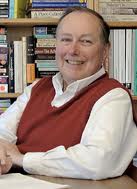 The belief that a society or a nation can be unified - its barriers of religion, class, and race broken down - by bringing its children together in common schools that express a lowest-common-denominator vision of national life is a persistent theme throughout the 19th and 20th centuries, and has especially been evoked against schools created by immigrant groups to teach their children within their own religious tradition.
The belief that a society or a nation can be unified - its barriers of religion, class, and race broken down - by bringing its children together in common schools that express a lowest-common-denominator vision of national life is a persistent theme throughout the 19th and 20th centuries, and has especially been evoked against schools created by immigrant groups to teach their children within their own religious tradition.
Critics like Jeff Spinner-Halev counter that pluralism is a positive social good, and allows individuals freedom to shape their own lives in terms of real choices:
A relentless diversity flattens the pluralism of society. … A pluralistic society is not a place where every institution mirrors the ethnic, racial, and gender composition of society. A pluralistic society has different kinds of groups with different kinds of memberships. … This kind of society will offer its members more choices than one that is diverse “all the way down.” … the irony of a diversity that is taken too far: eventually it makes society more homogeneous rather than heterogeneous. ... A society that has different institutions with different audiences, customers, clienteles, or students will be more pluralistic than a society where all the institutions are composed of the same people.
Advocates for an educational system that encourages non-government schooling argue that freedom in educational provision and the pluralism of the education provided requires the flourishing of alternatives to the schools operated by government, but only if these alternative schools are not compelled – or seduced – into adopting a pédagogie d’état which makes them essentially similar to government schools.
For the sake of freedom of conscience and of expression – itself founded on the principle of tolerance as well as ideological and philosophical principles of non-discrimination – no educational monopoly by the state can be justified within the democratic order. Freedom of conscience and expression are meaningless if children are subjected to mandatory indoctrination in a particular viewpoint selected by the state. (more…)
 Editor's note: School choice isn't just an American debate, and it's not just at issue now. Noted school choice scholar Charles Glenn offers redefinED readers some historical context. This is the first in a three-part series.
Editor's note: School choice isn't just an American debate, and it's not just at issue now. Noted school choice scholar Charles Glenn offers redefinED readers some historical context. This is the first in a three-part series.
While protections for educational freedom emerged from political struggles in a few countries – notably in Belgium, with the independence movement of 1830, and in the Netherlands, with the political mobilization of the Protestant and Catholic “kleine luyden” later in the 19th century – these were exceptional until after the Second World War.
It was only in reaction to the totalitarian regimes of the 20th century that the international community became aware of the need to put in place protections for the freedom of families to choose an alternative to government-sponsored schooling. Communist and fascist regimes sought to carry out more thoroughly what had already been implicit in the educational programs of mildly progressive governments of the late 19th century, but in a way that stripped the mask from the elite presumption to reshape the children of the common people.
The post-war movement to define human rights included the right to educational freedom, defined as “the liberty of parents . . . to choose for their children schools, other than those established by public authorities . . . and to ensure the religious and moral education of their children in conformity with their own convictions.” This right is by no means self-evident even in democratic regimes, where ‘progressive’ elites may think it their duty to use the educational system to make children better than their parents.
The words left out of the quotation above, “which conform to such minimum educational standards as may be laid down or approved by the State,” leave the door open for governments to impose requirements upon non-government schools which would make it impossible for them to maintain the distinctive character sought by parents. There is clearly an obligation upon contemporary governments to take steps necessary to protect children as well as to ensure the public interest is served by all elements – private as well as public – of the educational system. The education of the next generation is a matter of public concern and should be guided, in a democratic system, by shared assumptions about the common good . . . within limits reflecting the pluralistic nature of society. (more…)